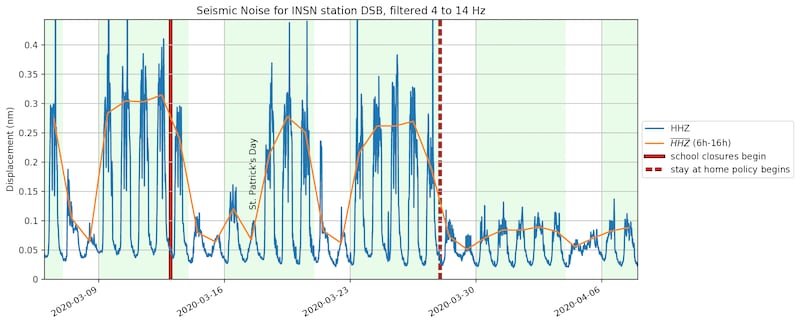Human-made ground vibrations in Ireland are currently about three times lower than they were before the Government’s restrictions on movement were introduced in response to the coronavirus pandemic, according to new data.
Seismologists at Dublin Institute for Advanced Studies (DIAS) released data on Wednesday illustrating the decrease in human activity as a result of Covid-19 lockdown measures.
The geophysics section in DIAS operates the Irish National Seismic Network (INSN). Instruments used by the INSN track "seismic noise" – human-made ground vibrations – as well as ground motions from natural phenomena, such as earthquakes and volcanoes.
According to the data released by DIAS, levels of seismic noise are up to three times lower now than they were before the lockdown.
Small movements
Dr Martin Möllhoff, director of seismic networks at DIAS, said: “Our day-to-day lives result in small ground movements. For example, by cars, trains, building sites and other industries.

“These human-induced vibrations, called seismic noise by seismologists, vary with the human activity. Worldwide social restrictions due to the coronavirus pandemic affect not only levels of air pollution, but also how much the ground beneath our feet vibrates.
“With the current Covid-19 restrictions on human movement, INSN seismic noise levels have been markedly reduced. In Ireland, seismic noise levels are now up to three times lower than they were before the restrictions were introduced.”
Prof Chris Bean, head of the geophysics section and director of the school of cosmic physics at DIAS, said the findings displayed a high level of compliance with the Government’s restrictions.
“Such lowered seismic noise levels can enhance the capability of a seismic network to detect small earthquakes and are testament to the high levels of compliance with Covid-19 movement restrictions,” he said.
The findings released by DIAS mirror findings from seismologists across the world, who have been tracking how Covid-19 restrictions have impacted on levels of seismic noise.










